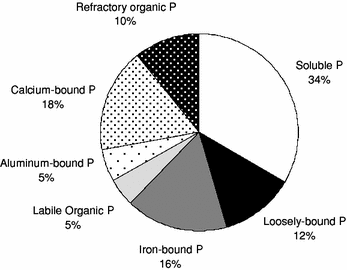James,W.F. and Larson,C.E.(2008): Phosphorus
dynamics and loading in the turbid Minnesota River (USA): controls
and recycling potential. Biogeochemistry, 90,
75-92.
『濁ったミネソタ川(米国)におけるリンの動態と負荷:コントロールおよび再循環能力』
『Abstract
Phosphorus (P) dynamics in the agriculturally-dominated Minnesota
River (USA) were examined in the lower 40 mile reach in relation
to hydrology, loading sources, suspended sediment, and chlorophyll
to identify potential biotic and abiotic controls over concentrations
of soluble P and the recycling potential of particulate P during
transport to the Upper Mississippi River. Within this reach, wastewater
treatment plant (WWTP) contributions as soluble reactive P (SRP)
were greatest during very low discharge and declined with increasing
discharge and nonpoint source P loading. Concentrations of SRP
declined during low discharge in conjunction with increases in
chlorophyll, suggesting biotic transformation to particulate P
via phytoplankton uptake. During higher discharge periods, SRP
was constant at 〜0.115 mg l-1 and coincided with an
independently measured equilibrium P concentration (EPC) for suspended
sediment in the river, suggesting abiotic control over SRP via
phosphate buffering. Particulate P (PP) accounted for 66% of the
annual total P load. Redox-sensitive PP, estimated using extraction
procedures, represented 43% of the PP. Recycling potential of
this load via diffusive sediment P flux under anoxic conditions
was conservatively estimated as 〜17 mg m-2 d-1
using published regression equations. The reactive nature and
high P recycling potential of suspended sediment loads in the
Minnesota River has important consequences for eutrophication
of the Upper Mississippi River.
Keywords: Equilibrium phosphorus concentration; Phosphorus; Redox-sensitive
phosphorus; Rivers; Soluble phosphorus; Suspended sediment』
Introduction
Study site
Methods
Biologically labile and refractory particulate phosphorus
pools of suspended sediment
Phosphorus equilibrium characteristics of suspended sediment
Water chemistry and loading analysis
Statistical analyses
Results
Particulate phosphorus composition and equilibrium characteristics
Phosphorus dynamics
Budgetary analysis
Discussion
Acknowledgements
References
Table 1 Operationally-defined particulate phosphorus (PP) fractions
|
Variables |
Extractant |
Recycling potential |
|
Loosely-bound PP |
1 M ammonium chloride |
Biologically labile; recycled via eH and pH reactions and equilibrium
processes |
|
Iron-bound PP |
0.11 M sodium bicarbonate-dithionate |
Biologically labile; recycled via eH and pH reactions and equilibrium
processes |
|
Labile organic PP |
Persulfate digestion of the NaOH extraction |
Biologically labile; recycled via bacterial mineralization of
organic P and mobilization of polyphosphates stored in cells |
|
Aluminum-bound PP |
0.1 N sodium hydroxide |
Biologically refractory |
|
Calcium-bound PP |
0.5 N hydrochloric acid |
Biologically refractory |
|
Refractory organic PP |
Persulfate digestion of remaining particulate P |
Biologically refractory |
|
Biologically labile = Subject to recycling pathways; Biologically
refractory = Low recycling potential and subject to burial |
Table 2 Biologically labile and refractory particulate phosphorus
(PP) fraction means (mg kg-1; n=20), standard errors
(S.E.), and percent composition for allochthonous(外来、異地性) TSS
loads in the lower Minnesota River, 2005-2006
|
Variable |
Mean |
S.E. |
Percent |
|
Biologically labile PP |
|
Loosely-bound |
138 |
7 |
18.2 |
|
Iron-bound |
186 |
6 |
24.5 |
|
Labile organic |
56 |
4 |
7.4 |
|
Refractory PP |
|
Aluminum-bound |
59 |
3 |
7.8 |
|
Calcium-bound |
203 |
14 |
26.8 |
|
Refractory organic |
116 |
18 |
15.3 |
ホームへ
